|
|
SICILY 2008
Not surprisingly,
as we headed from Italy over to Greece, our first stop out
of Rome was in Sicily, the famous island at the tip of the
Italian boot.
Although the majority of our friends took off to see the
lovely town of Taormina, Marla, Sam, and I decided to go see
Mt. Etna, the most famous active volcano in Europe. We
took a very long bus ride through the scenic twisting
countryside of Sicily.
Sicily is a region of Italy with a population around 5
million. As we learned, the island is economically
depressed. The majority of its economy is based on
agriculture. The other major industry is crime. es
indeed, I was half-amused and half-appalled to discover the
national hero of Sicily was the Godfather.
While here in America we admire Lincoln, Washington, et al,
everywhere we went I saw tee-shirts, postcards, and framed
pictures of the Marlon Brando character in the movie.
Good Grief!
|
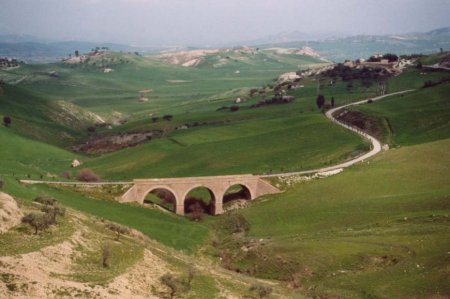 |
Our guide discussed
the Mafia in great detail on our bus ride up to Etna.
Although the Mafia operates mostly on the other side of the
island, it continues to be a major force in the Sicilian
culture. Many Sicilians do not regard these men as
criminals but as role models and protectors, given that the
state appeared to offer no protection for the poor and weak.
During the mid-1800s, Italy waged a series of battles to
free itself from outside domination by France, Spain, and
Austria. During this
Independence
movement, Sicily fell under the domination of the Italian
mainland. There was little or no organized
government. In 1860, the new unified Italian state
first took over both Sicily and the Papal States.
Unfortunately their new Italian rulers looked more to
exploit Sicily than make it feel like an equal member in the
new government. The Catholic Church did not like the
new rulers of Italy. The Popes were hostile to the new
politicians and state and strongly encouraged Catholics to
refuse to cooperate with the state.
During this turbulent period, Sicily had fallen to complete
disorder. The friction between the Church and the
state gave a great advantage to violent criminal bands in
Sicily who could claim to peasants and townspeople that
cooperating with the police (representing the new Italian
state) was an anti-Catholic activity. It was in the two
decades following the 1860 unification that the term
Mafia came to the attention of the general public,
although it was considered to be more of an attitude and
value system than an organization.
The Mafia became a means for rebels to defend the people
against oppression, Roman and Northern Italian control, and
outside invasion. Using its "Robin Hood" origins, the
Mafia gained the goodwill and trust from the Sicilian people
by resisting outside government domination.
Meanwhile the new government in Rome had too many problems
fighting France to worry about politics in Sicily, so they
ignored the Mafia. Using the social disorder to its
own advantage, the Mafia turned to criminal activity such as
protection rackets, cattle rustling, prostitution and
eventually drugs. The bribery of state officials was
another main source of income for the early Mafia.
During Italy's Fascist period, Mussolini waged an all-out
battle to suppress the Mafia. It takes a thug to beat a
thug. Badly weakened, the Mafia did not become
powerful again until after Italy's surrender in World War
II. During the U.S. occupation after World War II, our
own American government actually saw the Mafia as potential
allies against the Communists. The United States used
Italian connections of American Mafiosi during the invasion
of Italy and Sicily in 1943. Lucky Luciano and other
Mafiosi, who had been imprisoned during this time in the
U.S., provided information for U.S. military intelligence
and used Luciano's influence to ease the way for advancing
troops. Furthermore, Luciano's control of the ports
prevented sabotage by agents of the Axis powers.
An alleged
additional benefit (from the American perspective) was that
many of the Sicilian-Italian Mafiosi were hard-line
anti-communists. They were therefore seen as valuable allies
by the anti-communist Americans, who allegedly used them to
root out socialist and communist elements in the American
shipping industry as well as wartime resistance movements
and postwar local and regional governments in areas where
the Mafia held sway.
Some say that the
U.S. Office of Strategic Services, precursor to the CIA,
deliberately allowed the mafia to recover its social and
economic position as the "anti-State" in Sicily, and with
the U.S.-mafia alliance forged in 1943, this became the true
turning point of mafia history and the new foundation for
its subsequent 60-year rise to power.
Isn't it comforting to know the geniuses in our own
government were responsible for the return to power of the
most powerful crime syndicate in history?
|
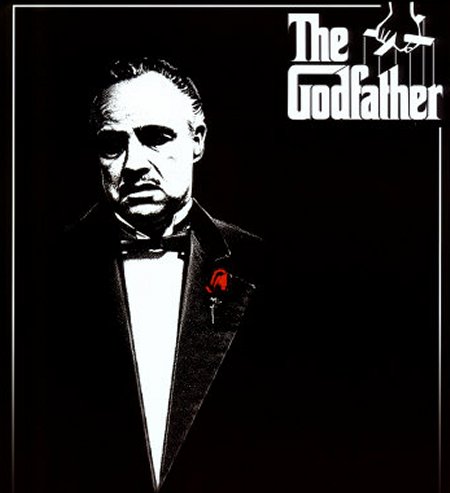
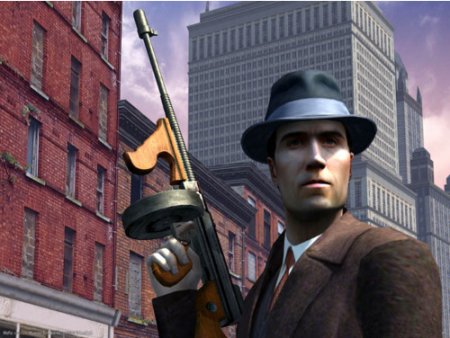 |
| |
SICILY'S MOUNT ETNA
Sicily's greatest natural attraction
is also its highest mountain. Indeed,
Etna is the tallest mountain south of the Alps.
To the ancient Greeks, Mount Etna was the realm of
Vulcan, god of fire, and the home of the one-eyed monster
known as the Cyclops. At approximately 3350 meters
(11,000 ft), it is Europe's highest active volcano.
The height of its summit
changes with each eruption, and over the centuries a few
lava flows have reached the coast.
I
was very curious to see Mt. Etna. A History Channel
story documented the theory that Mt Etna had been
responsible for an enormous tsunami. About 8,000 years
ago,
the eastern flank of the
mountain experienced a catastrophic collapse, generating an
enormous landslide in an event similar to that seen in the
1980 eruption of Mount St. Helens. The landslide left a
large depression in the side of the volcano, known as 'Valle
del Bove'
(Valley of the Ox). Research published in 2006 suggests that
this occurred around 6000 BC, and caused a huge tsunami
which left its mark in several places in the eastern
Mediterranean. It may have been the reason that the
settlement of
Atlit Yam (Israel),
now below sea level, was suddenly abandoned around that
time.
Today over 1200 square meters of Etna's surface is covered with
solidified lava. Etna offers skiing in the Winter months and
breathtaking hikes in the woods during the Summer. There are
also a number of smaller peaks on the slopes of Etna, and
some interesting caverns.
Since Etna is a strato volcano, with relatively cool lava
temperatures and numerous openings and
vents, nobody ever knows precisely where on its vast
surface the next eruption will be. Etna's
long recorded history has proven invaluable to the world's
volcanologists.
When they say Etna
is Europe's most active volcano, they aren't kidding.
Etna erupts all the time! For example, I read there was
another eruption in November 2008, just two months after we
visited the place.
(By the way, did you know that
ETNA or
MTETNA is the answer to practically any
crossword clue involving volcanos? Peru's
Misti
Volcano is a distant second in Crossword
importance. Many people don't realize my real interest
in travel is sneaky way to improve my Crossword skills.)
I was very
surprised to learn that Etna has skiing in the winter.
My
first clue was when I noticed the ski lifts taking people up
to the summit.
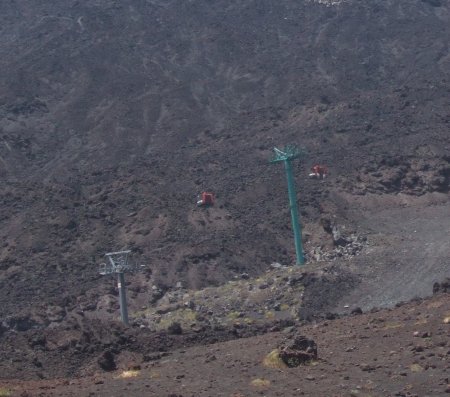
|
My second clue
about the winter skiing was when I noticed a postcard of
Etna's most famous tourist trap, La Capannina,
complete with plenty of snow.
There is an area near the summit where all the tourist buses
stop. I counted a half dozen little Italian cafes that
served wine, beer, sandwiches and gelato to the hundreds of
tourists that visit this area on a daily basis.
The most famous of these bistros is La Capannina, a
combination grocery store/bistro with a fascinating story
behind it. Read the story
Sicilian family save their restaurant from Mount Etna
eruption
(27 July 2001 17:14)
A Sicilian
family of restaurateurs and hoteliers toiled for hours
to divert an advancing mass of lava which threatened to
destroy their restaurant last week.
After five days of eruptions on Mount Etna, Davide
Corsaro was woken by one of his employees at 3am last
Wednesday (18 July) to be told of an eruption only 100
metres from his restaurant.
Corsaro owns and manages the 19-bedroom Hotel Corsaro
and the 30-seat La Capannina restaurant. Both are
in a mountain refuge at 2,100 metres, where cable cars
and ski-lifts depart.
Corsaro said: "At 7am the lava began to move faster.
We made calls to the emergency services, but they did
nothing until midday.
We built a barrier of
earth to control the path of the lava." He said 10
firemen arrived two hours later and attacked the lava
flow with 100,000 litres of water.
At one point the lava was only two metres from the
restaurant.
A total of 20 people, including four members of the
Corsaro family, successfully diverted the lava and saved
La Capannina. "It was like an American movie,"
Corsaro said.
The area is now closed to tourists. The state has
promised financial support until the mountain refuge
reopens but Corsaro said he was not holding his breath.
Road repairs to damage caused by an eruption in 1983
have not been finished. "We have a bad experience of
broken promises," he said.
If you look at the
pictures, you will be able to compare
La Capannina
before the 2001 Eruption and after the eruption.
As you can see, the lava flow literally ran right past the
restaurant, but the little hut was spared. It is
good to see their rescue efforts paid off.
Other than the
amazing story about the rescue of the little restaurant,
this visit wasn't very exciting. Since the area was
above timberline, there wasn't a tree in sight.
Judging from the picture of La Capannina pre-2001, there
used to be grass in the area, but no longer. This area
is as barren as a moonscape. There is a huge
ugly tableau of perpetual brownness everywhere you look.
I guess my biggest fuss was that we were given something
like 30 minutes to look around. The tour guide was
frantic not to spend an extra second up here. If
nothing else, at least give us some time to hike around! After a two hour ride
up and a two hour ride back, the whole trip felt like a huge
waste of time. What they really wanted to do was to
drop us off early in town with enough time to spend our
valuable tourist money. On the way back, Marla, Sam
and I all looked at each other with regret
- we should've gone to the beautiful town of
Taormina
like everyone else.
Oh well.
Marla and Sam didn't even bother to climb the trails behind
La Capannina. So I took off on my own. Below are
some of the breath-taking pictures I took.
|
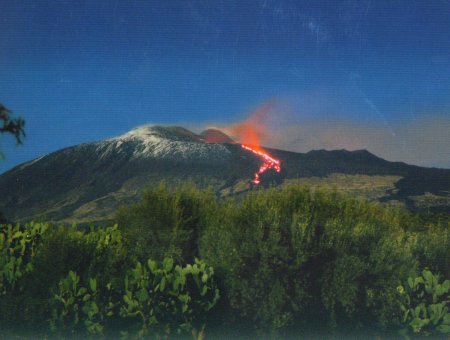
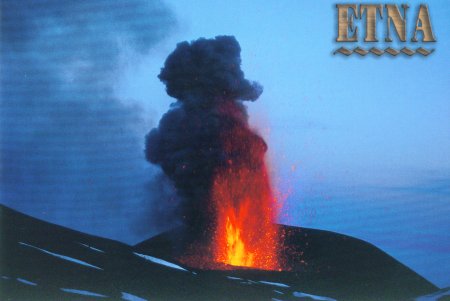
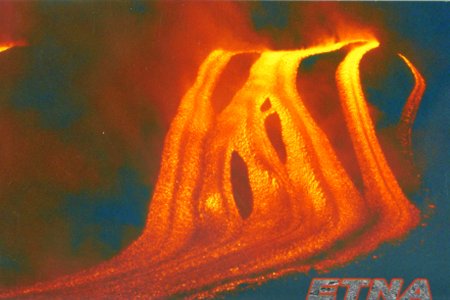
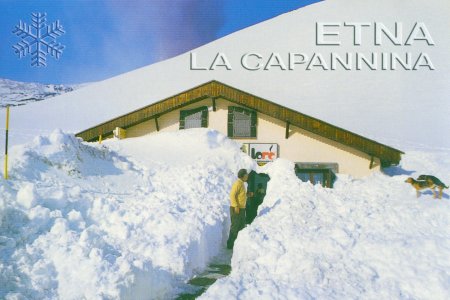
This is La
Capannina BEFORE 2001 (wintertime)
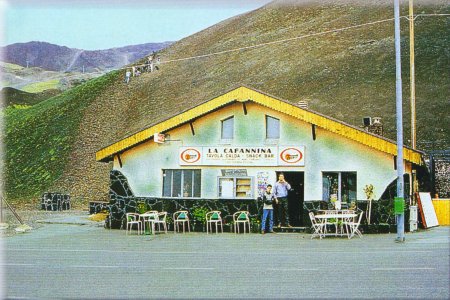
This is La
Capannina BEFORE 2001 (summertime)
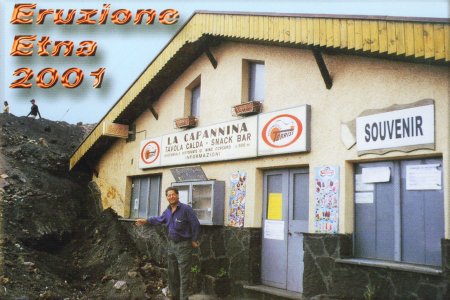
Here you see La
Capannina
with the lava
wrapped around it
|
|
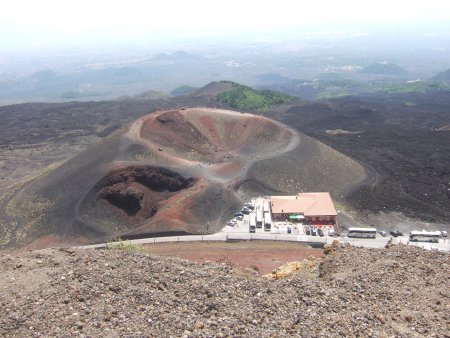
I took this picture from the Cone
Hill directly above La Capannina.
The restaurant you see in the picture is across the
street from La Capannina. |

In this picture, I am at the
bottom of a cone looking upwards.
Pretty exciting landscape, huh?
|
| |
|
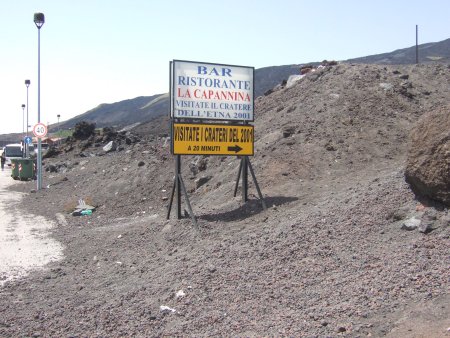
This sign
marks where the trail begins. It is next to the lava
that almost covered La Capannina Restaurant. The
sign says "20 minutes".
Is that 20 up and 20 more back down? Or 20 minutes
for the Round Trip?
I took a risk and went up. It wasn't too steep so
I ran up and back down.
So to answer my own question, it's a 20 minute round
trip if you run. |
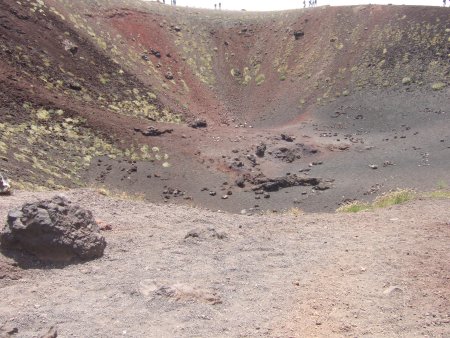
Another
lava cone. I hate to be negative, but this wasn't
very much fun.
The landscape was barren and ugly. And I wasn't
given enough time to go explore.
Most of the tourists didn't even bother climbing.
They just hit the bars and started
to drink. After all the fun I had exploring
Mt
Kilauea, a volcano in Hawaii ,
this trip was a huge disappointment.
|
| |
|
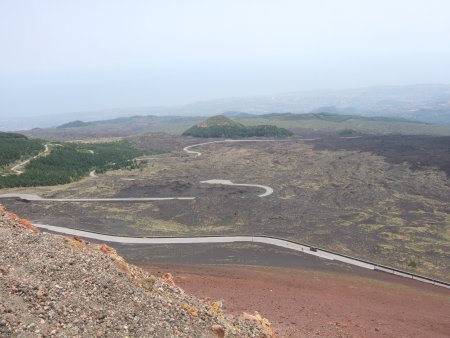
As you
can see, we are well above timberline. You
can see the ocean from Etna.
The distant blue you see is part coastline and part sky.
|

Here is a
picture of two lava cones side by side. Such
beauty!
By the way, those dots on the trail are people.
This is a vast area. |
|
|
|
|
|
|
|
|